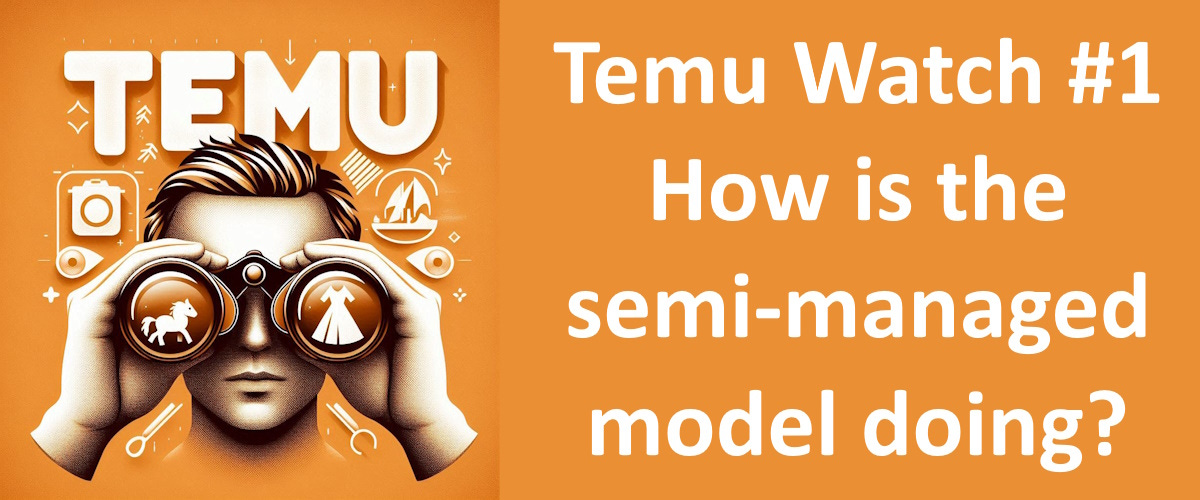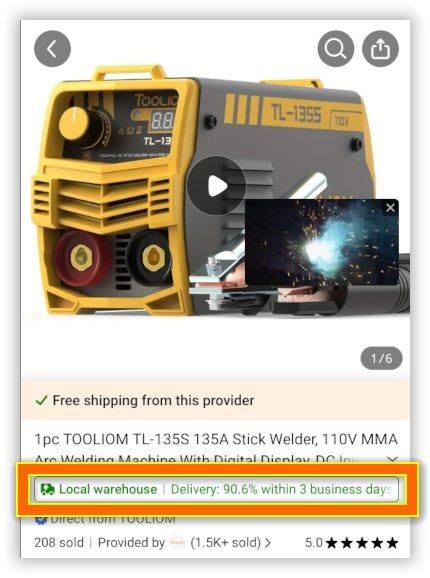Temu Watch #1: How is the semi-managed model doing?
What are the products, how are they priced, what merchants are joining, how are the logistics organised and what are the results so far?
Contents
Things that caught our attention
There are just two weeks left to book one of the remaining seats on the ‘China’s Breakneck Modernization’ study tour with Kaiser Kuo of the Sinica podcast and Ed Sander of Tech Buzz China. Find more information here.
After the resignation of its former CEO, Alibaba’s Hema (Freshippo) supermarket chain rolled back some of the changes it made in the past 10 months. It has been profitable for 4 months in a row. Read Ed’s summary here.
TikTok launched local services in Southeast Asia. Read Ed’s summary here.
After Hong Kong, Meituan has rolled out food delivery to Saudi Arabia. Read Ed’s summary here.
Following JD’s integration of JD Daojia in the JD app, Alibaba is pushing instant retail on Taobao through Ele.me integration. Read Ed’s summary here.
Introduction
At Tech Buzz China, we have been following Temu since it launched in September 2022. We published our first article on Temu in December 2022 and have been publishing updates roughly every half year.
Temu - Pinduoduo's Cross-Border E-commerce Platform (December 2022)
Temu: from $0 to $3 billion in 10 months (June 2023)
What’s up with…? - Part 1: Temu (December 2023)
How Temu’s semi-managed model could change everything … (May 2024)
Developments around Temu have recently accelerated, and the number of expert interviews we track in the database of our partner Six Degrees Intelligence is steadily growing. Many of these interviews are packed with valuable insights, and over the last month, I have been analysing around 30 interviews to get a clearer picture of where Temu is at.
Typically, we would share these insights through our bi-weekly newsletter, but the volume of information is so large that we are taking a slightly different approach. Over the next three weeks, we will share three reports on Temu, focussing on three aspects: the status of the semi-managed model launched in March, Temu’s financials (including profitability), and the challenges it faces with compliance.
After August, we plan to continue this ‘Temu Watch’ series with frequent updates.
As usual, we share part of these reports with all subscribers, but the best insights are reserved for our paid subscribers. Please consider supporting our research by also subscribing.
Ed Sander, Research Editor
How is the semi-managed model doing?
When Temu launched, it started with a ‘fully managed model’ in which merchants only had to deliver approved products to a Temu warehouse, and the platform would take care of sales and logistics. While giving up their pricing authority, this model relieved many merchants with no cross-border e-commerce experience from a lot of hassle. They would also have to compete with other merchants in fiercely bidding for the lowest price.
The model was perfect to start with. It has low requirements for merchants and can quickly gather many inexpensive goods. It was the ‘secret’ behind Temu’s speedy rise. In less than two years, Temu recruited 200,000 merchants and dispatched 4 million packages daily from 60 warehouses in China, attracting 467 million global users. By June 2024, Temu was active in 71 countries and had an average daily GMV of $120 million. [1]
Consumers place orders first, and merchants then ship, which reduces inventory risks. Merchants are willing to sell long-tail and white-label products at lower profits. Moreover, for merchants, selling surplus inventory through Temu’s fully managed model is often a better choice than clearing out with discounts below cost-price in other channels. But in the long run, platforms want to be more than a clearance channel … [1]
The fully managed model also has clear disadvantages: it is only suitable for small and light items; therefore, product categories are limited, and the speed is relatively slow (although faster than international mail). Once goods become larger, air transportation loses its cost advantage. There are also other small-sized product categories that aren’t suitable for fully managed; copyrighted books and food products that expire or require multiple qualifications and certifications all need to be stocked locally in advance. Otherwise, there could be compliance risks. [1]
Our May report explained how Temu started implementing a ‘semi-managed model’ in March 2024. In this model, merchants ship products to the consumer's country or region (primarily by sea freight), store them in local warehouses and deliver them to the buyer. As in the fully managed model, Temu still takes care of platform traffic, promotion, pricing, and after-sales service.
Last year, many Amazon sellers failed to meet sales expectations, resulting in a large inventory backlog. Temu launched its semi-managed service at the right time, providing these merchants with a compliant and efficient channel to help them quickly clear their inventory and reduce pressure.
Temu estimates that Amazon, independent website sellers, and offline wholesale traders in the United States have a clearance demand of at least $30 billion worth of goods each year. This is one of the market spaces for the semi-managed model. Temu's goal is to get $5 billion of this market. [1]
After it was launched in March 2024, the semi-managed model was quickly expanded to nine countries, including the United States, Canada, the United Kingdom, Germany, Spain, Italy, France, Australia, and New Zealand. In July, it was launched in more countries, including the Netherlands, Japan, and South Korea. [2] Temu tried a semi-managed model in Poland and Ukraine, but the number of orders was insignificant.
Fully managed or semi-managed?
In different regions, Temu adopts differentiated business models and strategies, which significantly impact the company's global expansion. Based on cost and market size, Temu flexibly chooses a fully managed or semi-hosting model to expand its international market. In overseas markets that have already matured, Temu has significant advantages and opportunities in adopting a semi-managed model.
However, promoting the semi-managed business is challenging in regions with few sellers and inadequate infrastructure. In areas where overseas warehouses are underdeveloped, such as the Middle East, Africa, and Latin America, the semi-managed model is difficult to implement, so the platform will direct more traffic to the fully managed model.
The fully managed model has high costs and a loss rate of about 20%. Therefore, the semi-managed model is chosen in some markets to save costs. Although Temu is currently making a loss owing to subsidies and attracting customers, the semi-hosting model is expected to break even soon by controlling costs (more on this in Temu Watch #3 in a few weeks).
Temu is considering converting small and underperforming ‘fully managed markets’ to the semi-managed model. This decision aims to better optimise resource allocation and improve overall operational efficiency. Newly developed markets will adopt both semi-managed and fully managed models. Users may not be able to detect the difference between the two models in the early stages because they only differ in interface design, in details such as text colour and whether products are marked "local."
Currently, Temu is directing most of its traffic, up to 90% for some categories, to semi-managed to support the model. On Amazon, there is a traffic bottleneck, and merchants need to spend large amounts of advertising costs to obtain corresponding traffic. In the semi-managed model, high-quality products can now receive a lot of free traffic.
In the US search scenario, 70% of the traffic is allocated to semi-managed products. Even if users choose to sort by sales, "Local warehouse" products with sales of only a few hundred pieces will appear on the first page of search results right after products with sales of tens of thousands. To encourage merchants to participate, Temu has a policy that Shein does not have: for goods below $30 the platform subsidises merchants $2.99 per order. [1]
Some merchants say that as long as a certain number of SKUs can be launched daily, Temu will continue to give them traffic. Some merchants said that Temu's operation will guide merchants on how to list products that Amazon does not accept, and it is much more flexible than Amazon overall. [3]
Temu is giving a lot of support for the semi-managed merchants. Anyone who sends a message to Temu will get a reply in seconds, and there are dedicated staff members to teach them how to launch new products and how to maintain links. Temu's purchasers will inform merchants what the platform will promote next. [3]
On the one hand, there is the enthusiastic Temu customer service, where everything can be discussed clearly via WeChat; on the other hand, there is Amazon, where everything is troublesome. Therefore, some Chinese sellers naturally prefer Temu. [3]
The rest of the article is available for paid subscribers.







